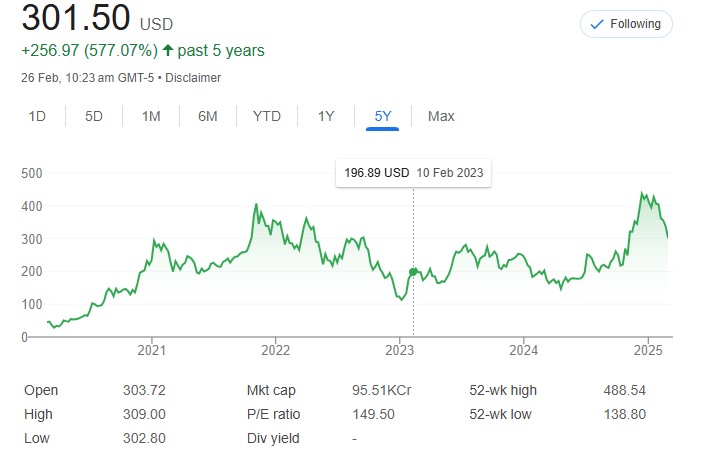Red Across the Board: A Tough Day for the U.S. Stock Market
It was a rough session on Wall Street to close out the week, as the U.S. stock market saw a significant sell-off on Friday, October 10, 2025. All three major indexes ended the day deep in negative territory, driven by a resurgence of trade war anxieties. The Dow Jones Industrial Average tumbled, shedding approximately 1.9% or over 870 points, while the broader S&P 500 fell by a stark 2.7%. The tech-heavy Nasdaq Composite felt the most pain, plunging a staggering 3.6% in its worst single-day performance since April. The market sentiment turned decidedly bearish, as investors reacted to fresh tariff threats against China, spooking a market that had been enjoying relative stability. This news overshadowed other market factors and set a cautious tone across trading floors. For a detailed read, sector-wise breakup, and deep dive, continue below.
In-depth Analysis: A Sea of Red
The day’s losses weren’t isolated; they were widespread, though some sectors were hit significantly harder than others. The primary catalyst was the announcement of potential new, steep tariffs on Chinese goods, which immediately soured investor sentiment and triggered a flight from riskier assets, particularly in trade-sensitive sectors.
Technology: The Epicenter of the Sell-Off
The technology sector was, without a doubt, the day’s biggest loser. The Nasdaq’s dramatic 3.6% drop tells the story. Companies with significant exposure to the Chinese market or reliance on international supply chains bore the brunt of the sell-off.
- Top Laggards: Semiconductor stocks were crushed. AMD and Micron Technology both saw their shares fall by over 5.7%. Other chip-related companies like Synopsys and Lam Research also posted significant losses.
- Big Tech Woes: Major tech giants weren’t spared. Apple, a bellwether for U.S.-China trade relations, saw its stock drop over 2%. Microsoft, Nvidia, and Amazon also ended the day with notable declines. The fear is that new tariffs could disrupt supply chains and increase costs, hurting profitability.
Financials: Feeling the Pressure
The financial sector also had a difficult day. Banks and investment firms are sensitive to broader economic sentiment, and fears of a trade war escalating into a global economic slowdown weighed heavily on the sector. Goldman Sachs fell nearly 2%, while other major banks like JPMorgan Chase also saw their shares decline. An environment of uncertainty and potential economic contraction is generally negative for banks’ lending and investment banking activities.
Industrial and Basic Materials: Mixed but Mostly Down
Industrials, another sector highly sensitive to global trade, experienced declines. A name like Boeing, with its significant international sales, slipped around 1.7%. However, there was a fascinating counter-trend in the basic materials sector. While many materials companies fell on global growth fears, U.S.-based rare earth mineral companies like MP Materials and USA Rare Earth surged by around 15%. This spike was a direct reaction to China’s move to impose export controls on these critical minerals, leading investors to bet on domestic producers.
Consumer Sectors: Caution Prevails
Consumer discretionary stocks, which depend on confident consumer spending, took a hit. Companies like Nike and Tesla saw their shares fall as investors worried that tariff-driven price increases could dampen consumer demand. In contrast, consumer staples, which sell essential goods, held up relatively better, as they are typically seen as a more defensive play during times of market turmoil. Still, the overall mood was one of caution.
Outlook & Upcoming Events: What to Watch Next Week
As investors try to make sense of Friday’s sharp downturn, all eyes will turn to the week ahead for clues on where the market is headed. The coming days are packed with potentially market-moving events.
Earnings Season Kicks Off
Third-quarter earnings season begins in earnest, and it’s starting with the big banks. Investors will be scrutinizing reports from:
- JPMorgan Chase (JPM)
- Goldman Sachs (GS)
- Bank of America (BAC)
- Citigroup (C)
- Wells Fargo (WFC)
Their results and, more importantly, their forward guidance will provide a crucial barometer of economic health and the potential impact of trade tensions on corporate America.
Economic Data and Fed Speak
The economic calendar is a bit unusual due to an ongoing U.S. government shutdown, which is expected to delay key reports like the Consumer Price Index (CPI). However, traders will still get several important updates, including:
- Industrial Production data
- NY and Philly Fed Manufacturing surveys
- NFIB Small Business Optimism Index
Several Federal Reserve officials, including Chair Powell, are scheduled to speak. Markets will be listening intently for any hints about future monetary policy, especially with the next FOMC meeting scheduled for October 28-29, where a rate cut is widely anticipated to support the economy.
Holiday Trading Note
Monday, October 13, is Columbus Day. While the U.S. stock market will be open for regular trading hours, the bond market will be closed, which could lead to slightly different trading dynamics to start the week.
